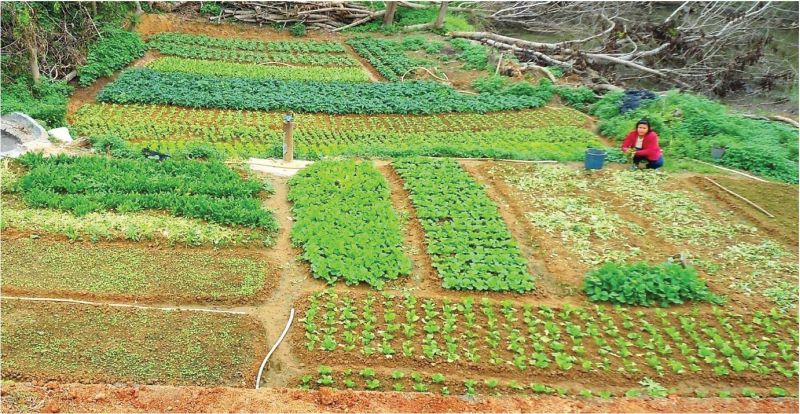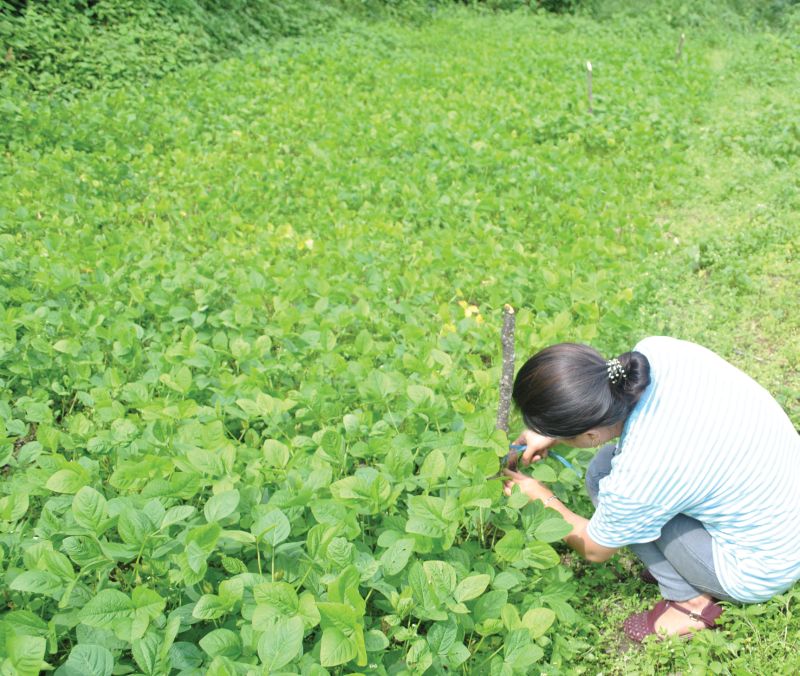1

Crop Rotation

Cover Crop
Dr. Hannah Krujia
ACTO Agronomy, KVK Phek
Conservation agriculture is a set of soil management practices that minimizes the disturbance of the soil's structure, composition and natural biodiversity. Conservation Agriculture is a farming system that prevents losses of arable land while regenerating degraded lands. It maintains a permanent soil cover, minimum soil tillage, and diversification of plant species. CA is a response to sustainable land management, environmental protection and climate change adaptation and mitigation.
CA promotes various management practices such as:
utilization of green manures or cover crops (GMCC's) to produce the residue cover
no burning of crop residues
integrated disease and pest management
controlled or limited human and mechanical interference in agricultural fields.
When CA practices are used by farmers one of the most important environmental benefits is decrease in fossil fuel use and greenhouse gas (GHG) emissions. (Source: Conservation Agriculture Knowledge Portal)
Minimum mechanical soil disturbance – Reduces soil erosion and preserves soil organic matter. Direct seeding involves growing crops without mechanical seedbed preparation and with minimum soil disturbance. The term direct seeding in CA systems is the same with no-till farming, zero tillage, no-tillage, direct drilling, etc. Planting refers to the accurate placing of large seeds (maize and beans) whereas seeding usually refers to a continuous flow of seed as in the case of small cereals (wheat and barley).
Permanent soil organic cover – Keeping the soil covered is a fundamental principle of CA. Cover crops improve the stability of the Conservation Agriculture system, not only on the improvement of soil properties but also promote an improved biodiversity in the agro-ecosystem. Cover crops are beneficial as they:
Protect the soil during fallow periods.
Mobilize and recycle nutrients.
Improve the soil structure and break compacted layers and hard pans.
Permit a rotation in a monoculture.
Can be used to control weeds and pests.
Species diversification – Growing different types of crops in crop rotation leads to a diverse soil flora and fauna, as the roots excrete different organic substances that attract different types of bacteria and fungi, which in turn, play an important role in the conversion of these substances into plant available nutrients. Crop rotation has an important phytosanitary function as it checks the carryover of crop-specific pests and diseases from one crop to the next crop via crop residues. A well planned crop rotation promotes good soil structure, provides a diverse range of soil flora and fauna that contributes to nutrient cycling and enhanced plant nutrition, and helps to prevent pests and diseases.
Advantages of Conservation Agriculture:
• Land - Conservation agriculture develops the soil structure and protects the soil against erosion and nutrient losses by maintaining a permanent soil cover and minimizing soil disturbance.
• Labour – As Conservation agriculture requires minimum soil disturbance, use of human labour is minimum.
• Water - Conservation agriculture involve considerably less water use due to increased infiltration and improved water holding capacity from crop residues left on the soil surface.
• Nutrients - Soil nutrient status are enhanced by the biochemical decomposition of organic crop residues at the soil surface. The soil fertility is built up over time under conservation agriculture, and less fertilizer amendments are required to achieve optimal yields over time.
• Soil biota - Insect pests and other disease causing organisms are checked by diverse community of beneficial soil organisms, including predatory wasps, spiders, nematodes, mites and beneficial bacteria and fungi. In addition, the burrowing activity of earthworms and other fauna create tiny channels or pores in the soil that facilitate the exchange of water and gases and loosen the soil for enhanced root penetration.
• Economic benefits - Farmers using CA technologies typically reported higher yields (up to 45-48% higher) with fewer water, fertilizer and labour inputs, thereby resulting in higher overall farm profits. (Source: Conservation Agriculture Knowledge Portal)
• Environmental benefits - Conservation agriculture represents an environment friendly set of technologies, as it utilizes the available resources more efficiently than conventional agriculture.
• Equity considerations - Conservation agriculture has the advantage of being reachable to many small-scale farmers who needs to achieve the highest possible yields with limited land area and inputs.
• Active role for farmers - CA methods are most effective when used with skillful management and careful consideration of the various agro ecological factors affecting production on any given farm or field. It should be seen as a set of sound agricultural principles and practices that can be applied either individually or together, based on resource availability and other factors. For this reason, farmers are encouraged to experiment with the methods and to evaluate the results for themselves and not just to "adopt" CA technologies.




